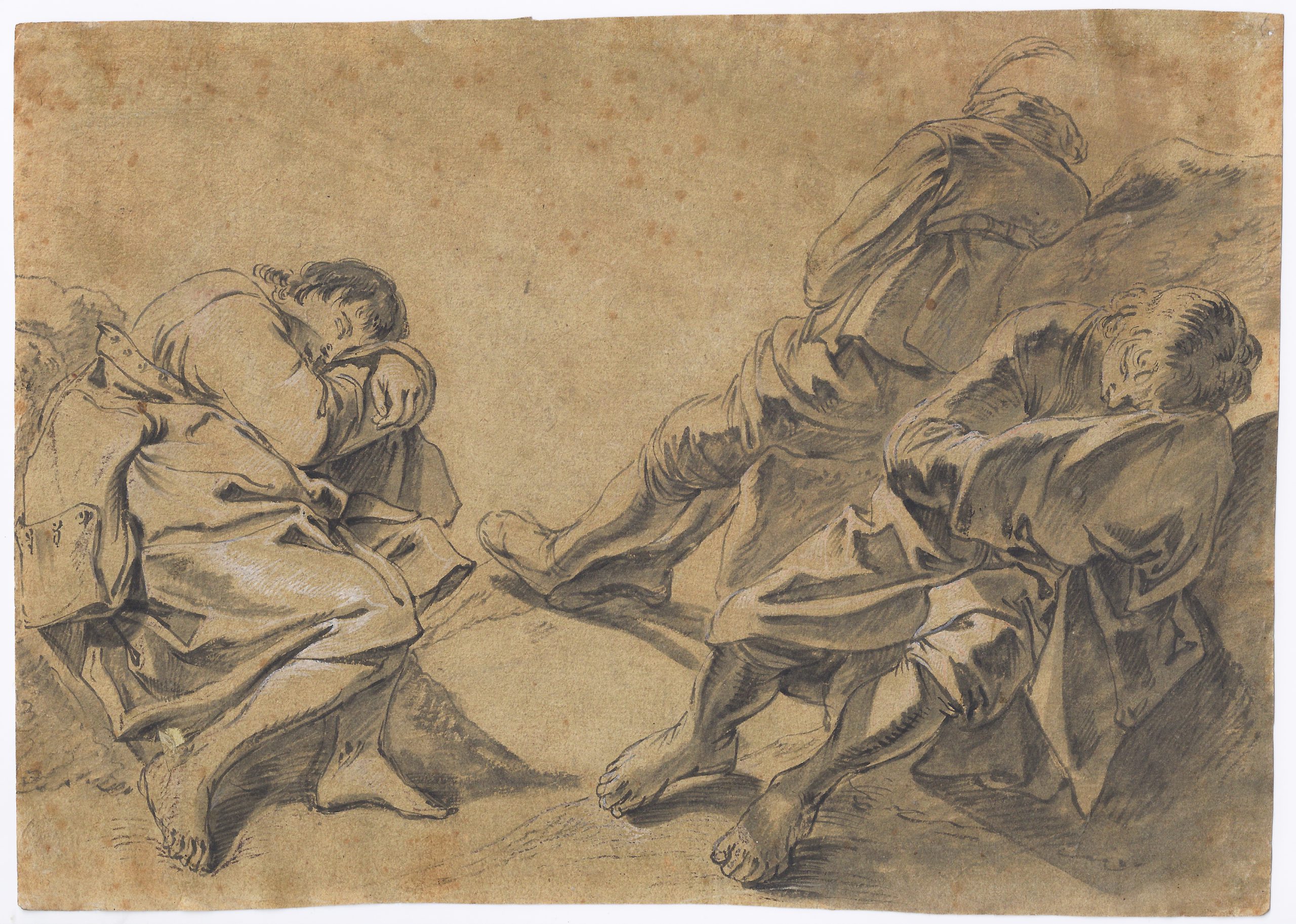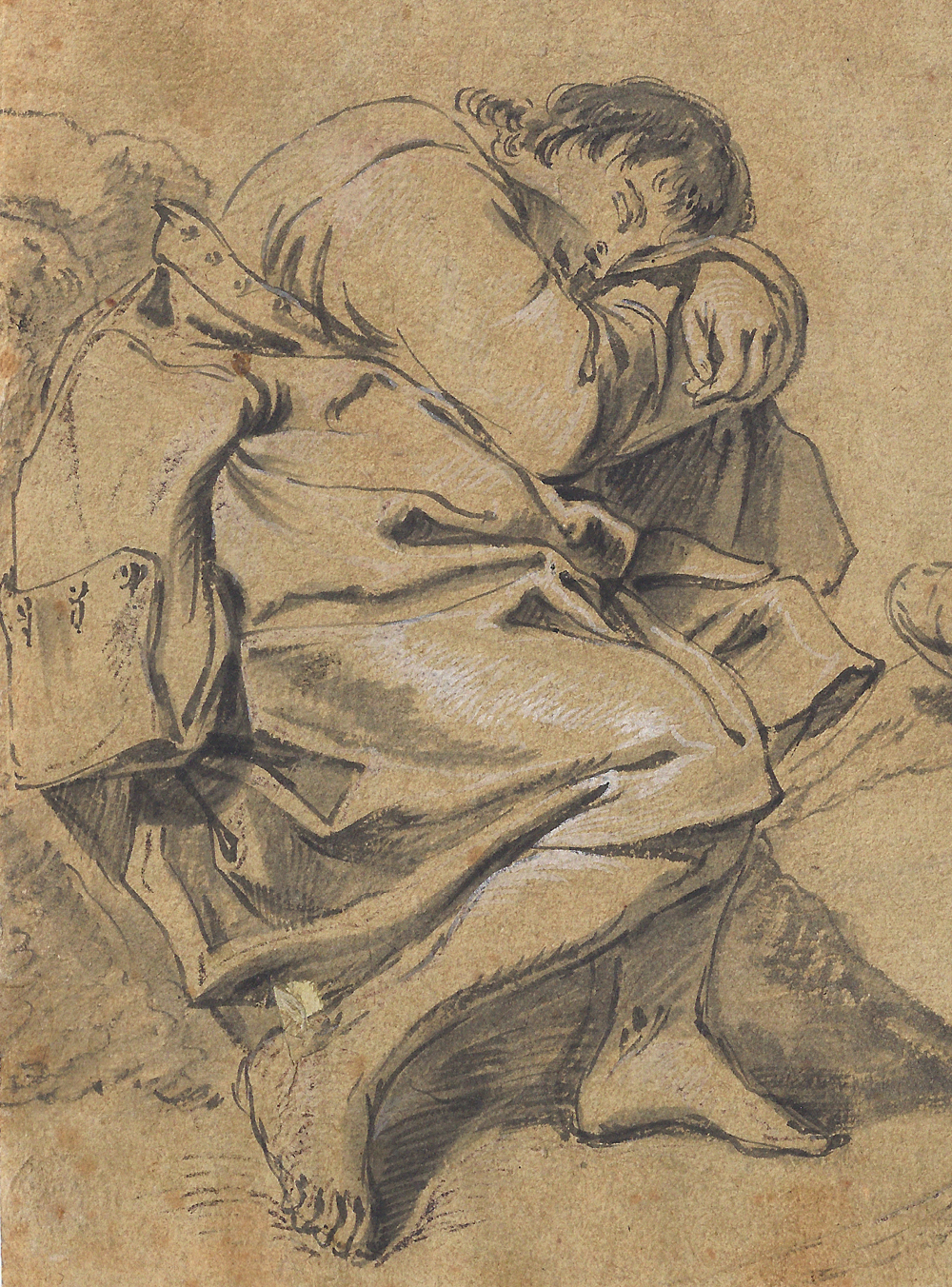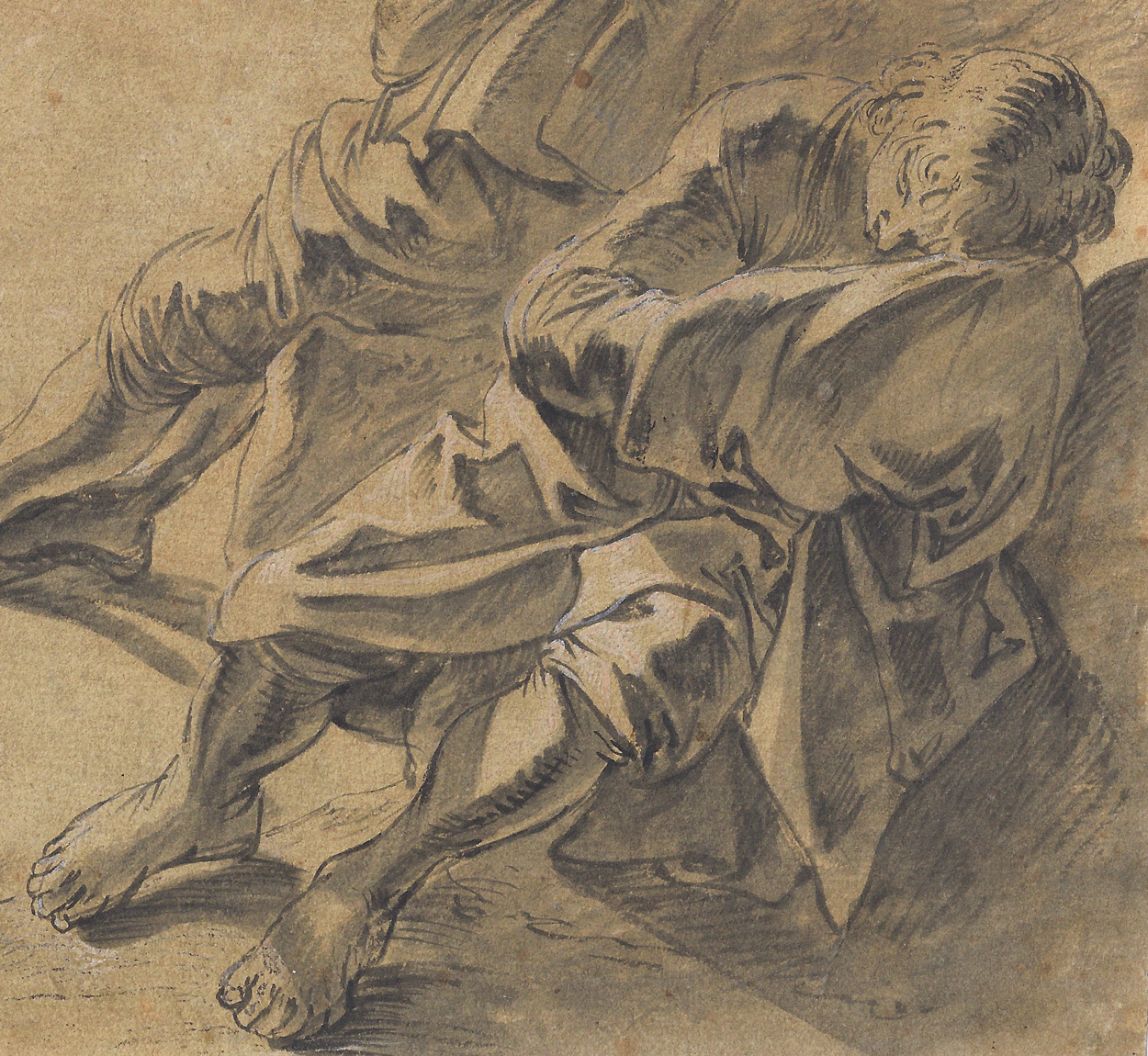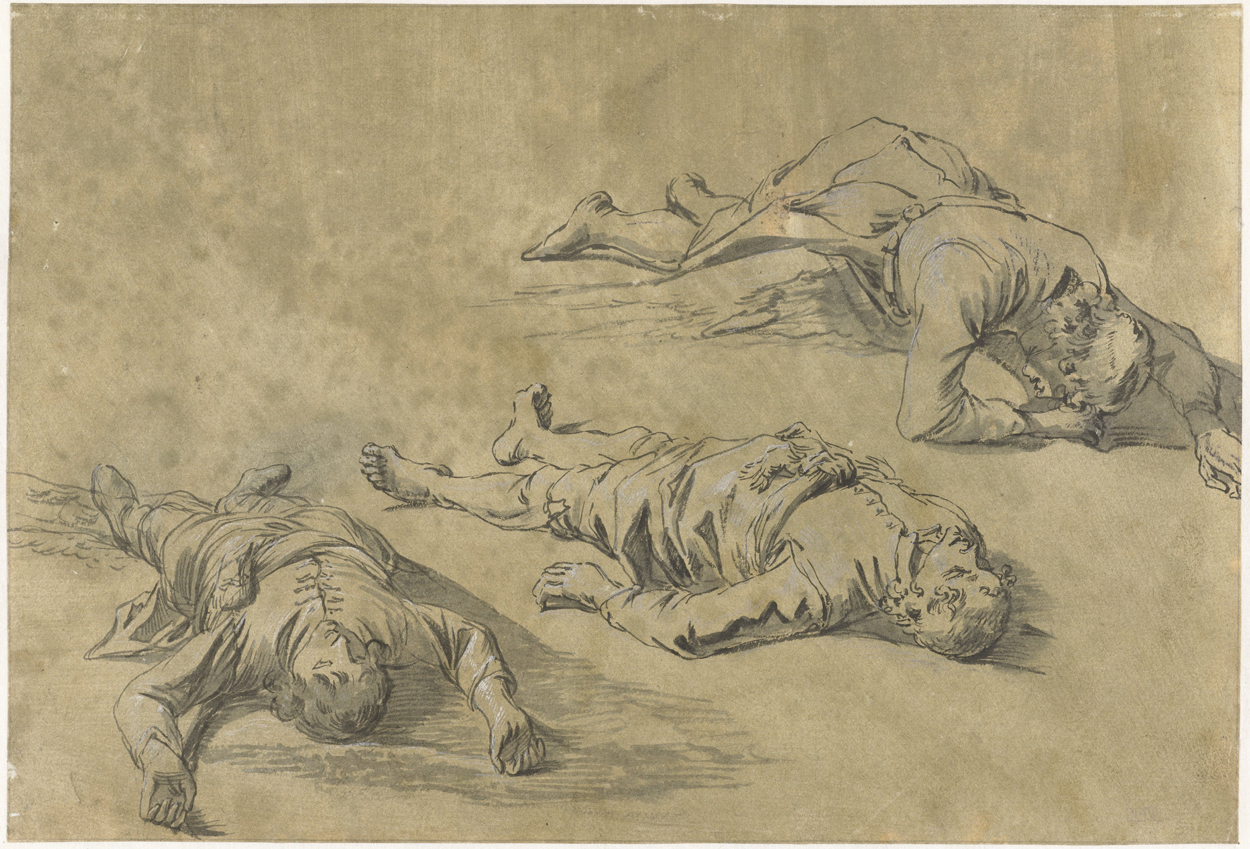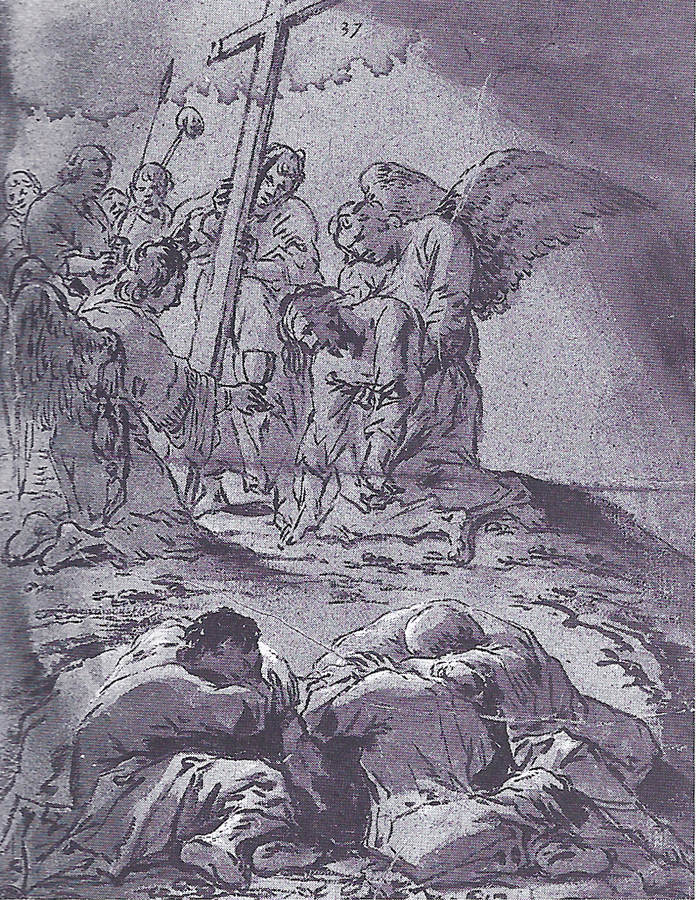LEONAERT BRAMER (Delft 1596 – 1674 Delft)
Leonaert Bramer (Delft 1596 – 1674 Delft)
Three Sleeping Men
Pen and brush in black ink, heightened with white, on paper tinted yellow-green, 199 x 281 mm (7.8 x 11.1 inch)
Provenance
~ Christian Gottfried Matthes (1738–1805) (Lugt 2871, the mark applied on the verso, lower right)
~ Private collection, Belgium
***
Leonaert Bramer is one of the most intriguing and at the same time most underrated artists of the Dutch seventeenth century.1 He travelled widely in Italy and France from 1614 to 1628. In Rome he was one of the founders of the Bentvueghels group of Northern artists and was involved in several street brawls, including one famously with Claude Lorrain. Bramer drew on a variety of influences for his most characteristic paintings - small nocturnal scenes with vivid effects of light. Works such as the Scene of Sorcery (Bordeaux) have earned him the reputation of an interesting independent who cannot easily be pigeonholed. Bramer was also one of the few Dutch artists to paint frescoes in Holland, but none of his work in the medium survived.
Bramer evidently knew well the greatest of his Delft contemporaries, Johannes Vermeer, for he came to the latter's defense when his future mother-in-law, Maria Thins, was trying to prevent him from marrying her daughter. In fact, it is likely that Bramer, rather than Carel Fabritius, was Vermeer's teacher. Bramer had a wide-ranging interest in European literature and illustrated Virgil's Aeneid, Till Uilenspiegel, and various Spanish novels, always in a style as much Italian and French in origin as Dutch.
Although Bramer was a very prodigious draftsman, sheets like the present work with studies of separate figures are rather uncommon in his oeuvre. The collections of the Rijksprentenkabinet, Amsterdam, include a highly comparable drawing of Three Reclining Men, executed in the same technique on similar paper of near-identical size (see fig.).2 It has been suggested that the Rijksmuseum sheet was intended by Bramer as a model drawing for apprentices to copy. Two further related drawings, possibly from the same set, are also in the Rijksmuseum.3 The three Rijksmuseum drawings have been dated to the first half of the 1640s, and it is likely that our drawing dates from the same period.
Almost all of Bramer’s drawings sprang from his imagination. The related Rijksmuseum sheets are thought to have drawn in this way, but our drawing has the appearance of being observed from life, which makes it a rarity in Bramer’s drawn oeuvre. Figures from the model sheets generally do not appear in the artist’s painted works; the three figures in our drawing do not appear to occur in any of Bramer’s paintings. Although the clothing appears to be seventeenth-century, the figures are reminiscent of scenes of sleeping apostles in depictions of the Agony in the Garden, such as Bramer’s drawing of the subject preserved in the Kunsthalle, Bremen (see last fig.).4
In the late eighteenth century the present drawing was owned by Christian Gottfried Matthes (1738–1805), a painter and printmaker based in Berlin who specialised in history and flower pieces.
A painting by Bramer sold by the gallery can be found here.
SOLD
1. For the artist, see: Jane ten Brink Goldsmith and Michiel C. Plomp, Leonaert Bramer 1596-1674, ingenious painter and draughtsman in Rome and Delft, Zwolle 1994.
2. 191 x 281 mm; inv. no. RP-T-1902-A-4636; see M. Schapelhouman and P. Schatborn, Dutch Drawings of the Seventeenth Century in the Rijksmuseum, Amsterdam, artists born between 1580 and 1600, Amsterdam/London 1998, cat. no. 50, p. 25, repr.
3. Four Horsemen and a Man Drawing his Sword, 211 x 268 mm, and Figure Studies of a Man, a child in a cradle, a woman and child, and a lacemaker, 212 x 286 mm; Schapelhouman and Schatborn, op. cit., cat. nos. 49 and 51, pp. 25-26, repr.
4. Ten Brink Goldsmith and Plomp, op. cit., p. 125, fig. 26a.
